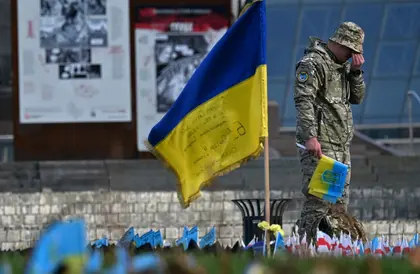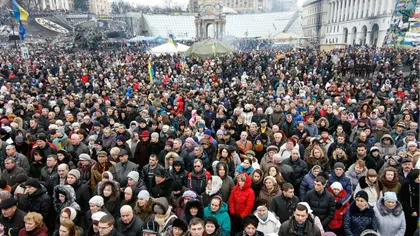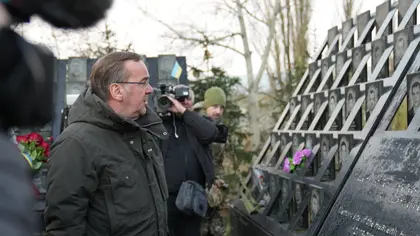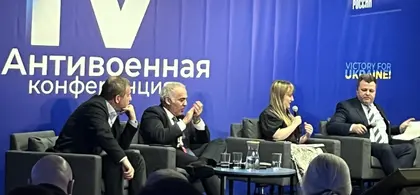What is the history of democracy in Ukraine?
Ukraine has a history that goes back centuries. Aspirations for freedom and justice were often central to its nation-building project, but the history of democracy in contemporary independent Ukraine begins at the end of 1991, when the country emerged from the Soviet Union.
JOIN US ON TELEGRAM
Follow our coverage of the war on the @Kyivpost_official.
During the Soviet period, Ukraine was part of a one-party authoritarian state. When the Soviet Union ceased to exist, all the post-Soviet states needed to transition to a different kind of political system – and the hope in Western capitals was that they would transition to democracy. Some of them managed it both well and quickly – Latvia, Lithuania, Estonia – while others did not manage it at all, like Turkmenistan and Uzbekistan.
Ukraine made important progress towards democracy during the 1990s, compared to most other post-Soviet states. It managed peaceful transfers of power in presidential and parliamentary elections throughout the 1990s. But what it did not manage to do in the first decades of independence was to consolidate democracy. There were periods when rights and freedoms improved and elections were relatively free and fair, followed by periods of democratic backsliding.
In the recent history of Ukrainian democracy there are two particularly pivotal moments: the Orange Revolution and the Revolution of Dignity. The Orange Revolution in 2004 saw mass protests after an attempt to rig a presidential election in favour of the country’s prime minister, Viktor Yanukovych. Ukrainians took to the streets to stand up for democracy, demand their democratic rights and prevent Yanukovych from unlawfully coming to power. Yanukovych’s opponent, Viktor Yushchenko, was eventually declared president after a third round of voting.
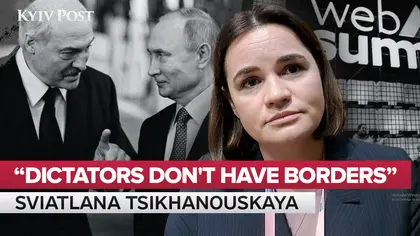
Belarusian Opposition Leader Tsikhanouskaya: No Free Belarus Without a Free Ukraine and Vice Versa
But Yanukovych did become president a few years later, via a free and fair election, and he served from 2010 until 2014, when he was forced out in the mass protests known as the Revolution of Dignity (or ‘Euromaidan’). Ukraine had been due to sign an EU association agreement in late 2013, when Yanukovych suddenly pulled out and instead announced that Ukraine would be strengthening its ties with Russia.
Following months of protests, and the deaths of over 100 protesters in clashes with riot police, Yanukovych fled to Russia in February 2014. Ukraine’s parliament voted to remove him from office on the basis that he was not fulfilling his constitutional duties as president. The parliament then played a key role in organizing a snap election to replace him, with the parliamentary speaker serving as acting president in the interim. Petro Poroshenko was subsequently elected Ukrainian president in May 2014, in an election judged to have been ‘genuine’ by international observers.
While these two pivotal events show the desire of Ukrainians to live in a well-functioning democracy, they also reflect weaknesses in Ukraine’s democratic institutions. In 2004 an election was rigged, meaning that the voting did not take place in a free and fair manner. The events of 2013-14 followed a period of four years when Ukraine had been backsliding towards autocracy under Yanukovych, who was trying to pass repressive laws to keep himself in power. When Yanukovych eventually fled the country, it was an unprecedented situation and the Ukrainian constitution did not stipulate clear procedures for dealing with a president who abandoned his duties without resigning.
Weaknesses in Ukraine’s democratic institutions are also evident in the performance of the country’s courts and political parties over recent decades. Ukraine’s judicial system has never functioned very well or independently, and is vulnerable to corruption, while political parties have never managed to establish deep roots among the population. A well-functioning democracy requires strong political parties that represent voters’ interests, not just elite interests. Throughout Ukraine’s recent history, political parties have often been elite projects to support the interests of particular businessmen or oligarchs.
However, the 2014 and 2019 elections saw significant numbers of reform-oriented politicians elected to parliament who have been important drivers of change. New institutions, such as the High Anti-Corruption Court and National Anti-Corruption Bureau, have also been created in an attempt to improve the judicial system.
Since 2014, Ukraine has been struggling against Russian aggression, following Russia’s annexation of Crimea and its military intervention in Donbas. Despite the challenges of trying to make democracy work under such conditions, most indicators of democracy improved after 2014. Ukraine also managed to hold democratic free and fair elections in 2014 and again in 2019, when Ukraine’s current president, Volodymyr Zelenskyy, defeated the incumbent, Petro Poroshenko.
There has been notable progress in strengthening democracy at the local level, as decentralization reform led to the creation of ‘hromadas’, local-level administrative units which help ensure increased resources and decision-making powers for local communities. It is one of the most successful reforms of recent years and has enabled local resilience after Russia’s full-scale invasion.
Is Ukraine a democracy today?
Above all, Ukraine today is a country at war. It is difficult – if not impossible – for certain democratic institutions to function as they should when part of the country is under occupation and the rest is under intense continued physical threat.
There are multiple definitions of democracy. Even the most minimal definitions of democracy require regular free and fair elections, in which all eligible adults are able to participate. Ukraine would normally hold presidential elections every five years, meaning that in normal circumstances the next election should take place in March 2024. A parliamentary election should have been held in October 2023. But the Ukrainian constitution states that elections cannot take place while the country is under martial law. And the reality is that Ukraine would struggle to conduct elections that are free, fair and inclusive while it is at war with Russia.
Millions of Ukrainians are outside of the country, spread across Europe and other parts of the world, including Russia. Others are fighting at the front or living in occupied territory. It would be immensely difficult to ensure their involvement. It would also be difficult to ensure the safety and security of polling stations, and international observers like the OSCE would be unable to monitor the election process. These are all very practical challenges that make free and fair elections difficult, near impossible. There has been some external pressure on Ukraine to conduct elections to show that it is democratic. But Ukraine’s democratic credentials would not be confirmed by an unsafe election held under current circumstances.
A recent poll by the Razumkov Centre, funded by USAID, asked Ukrainians how they feel about the prospect of elections in 2024. It found that around 64 per cent of Ukrainians were negatively disposed towards the idea of elections taking place, and only 15 per cent thought elections in 2024 were a good idea. The key objections which respondents expressed against holding elections next year were that Ukraine lacks the funds, that its legislation does not allow elections while martial law is in place, it will be difficult to guarantee the security of people participating, and it will be impossible to maintain democratic electoral standards due to temporary restrictions on political rights and freedoms.
It would also be difficult for meaningful election campaigning to take place in current conditions. Campaigning would be complicated by the media restrictions that Ukraine has put in place, largely with security concerns in mind, to make sure that media are not reporting things that are detrimental to national security. Ukraine currently has a level of media control which is not compatible with democracy in peaceful conditions. Election campaigns also tend to be divisive by nature, and exacerbating political divisions now might be damaging for Ukraine’s war effort and morale.
So while Ukraine was classified as a democracy in February 2022, when the full-scale invasion happened, the war means it cannot currently meet the minimal criteria of a democracy used by political scientists and organizations that classify regime types, such as V-Dem, Freedom House and the Economist Intelligence Unit. Ukraine is sticking by its democratic constitution in terms of how the country is being run, but martial law precludes the holding of elections.
What kind of democracy is Ukraine? Is it a liberal democracy?
At the time of Russia’s full-scale invasion, Ukraine was classified as an electoral democracy. That means Ukraine met the minimal criteria for democracy – it conducted regular competitive elections with universal suffrage – but it failed to meet some of the criteria associated with liberal democracy, such as consistent rule of law. At present, Ukraine could be described as an aspiring democracy that is at war. It does not currently meet the criteria for electoral democracy or liberal democracy (as these terms are used in political science) because it is under martial law and cannot hold elections. There are few contemporary examples of countries managing to maintain democracy when under full-scale military assault. For example, the United Kingdom was unable to conduct national elections during World War II.
In terms of its political system, Ukraine has a semi-presidential system of government, which means executive power is shared between a president who is directly elected by citizens, and a prime minister and cabinet of ministers who answer to parliament.
Semi-presidential systems come in different forms, and the Ukrainian system has changed over time. The type of semi-presidential system in Ukraine since 2014 can be described as ‘parliamentary-presidential’, under which the cabinet of ministers can only be dismissed by a parliamentary vote, not by the president. In earlier years, Ukrainian presidents had greater powers, including the power to dismiss the cabinet or any of its members.
The powers and responsibilities of the Ukrainian president are still considerable, including representing Ukraine internationally and being the key decision-maker when it comes to security and defence, able to appoint and dismiss the high command of the armed forces. The president can propose draft laws for consideration by parliament, and issue presidential decrees and directives that are legally binding. The president is currently elected for a fixed five-year term, and for a maximum of two consecutive terms.
Ukraine’s parliament is called the Verkhovna Rada. It is a unicameral parliament (it has one chamber) with 450 members, called deputies, who are elected for a five-year term. According to Ukraine’s constitution, parliamentary elections are normally meant to take place on the last Sunday of October in the fifth year of the Rada’s mandate.
The system for electing deputies to parliament has changed repeatedly over time. At present, half of the deputies in the Verkhovna Rada are elected in the majoritarian way from single mandate districts, while the other half of parliamentary seats are allocated to parties based on proportional representation. Some parliamentary seats have remained unfilled since 2014 due to Russia’s occupation of Crimea and parts of Donbas, where Ukrainian polling stations could not function.
You can read the original text here.
Reprinted from chathamhouse.org with the editorial board's permission.
You can also highlight the text and press Ctrl + Enter


